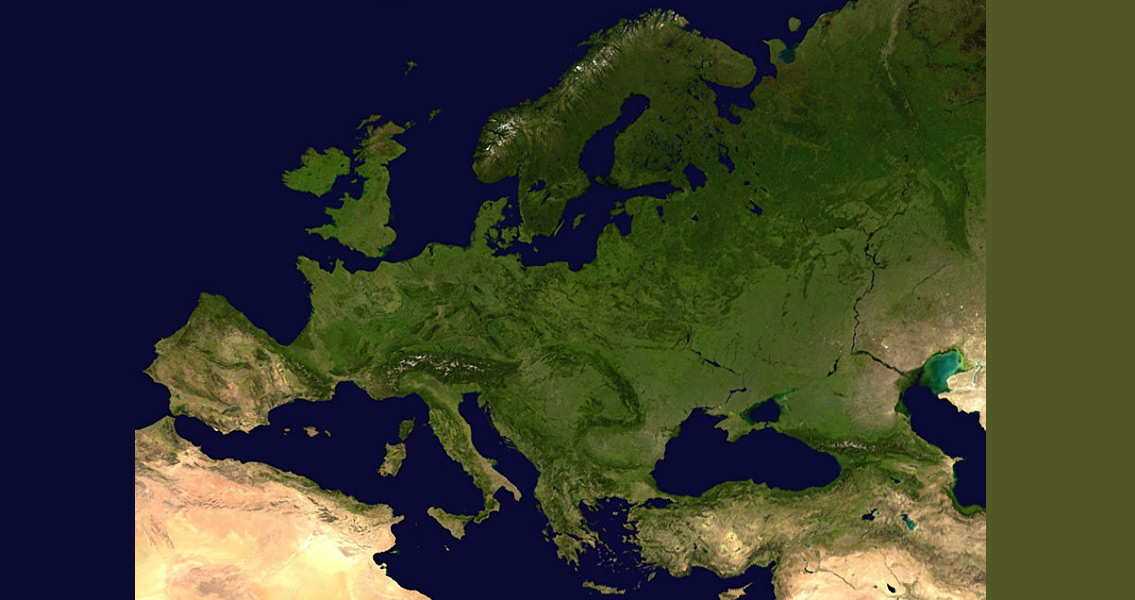<![CDATA[Scientists from the Max Planck Institute For the Science of Human History have found evidence that a previously unknown major population shift took place in Europe 14,500 years ago. Their findings come as part of a wide ranging study of early human hunter-gatherer DNA. The results have offered several valuable insights into prehistoric European demography, from the initial human dispersal from Africa into Asia and Europe, to the consequences of the last Ice Age. The hitherto unheard of European population shift occurred as the last Ice Age was coming to an end. "During this period of drastic warming, it looks like the European hunter-gatherers were largely replaced by a population from a different maternal source," explained Adam Powell, a senior author of the study at the MPI in Jena; in a press release published by the institute. The team's results have the potential to drastically change the understanding of the demography of early human hunter-gatherers. "Our modeling of ancient European hunter-gatherers demonstrates that their demography was likely far more complicated than previously assumed." said Dr. Powell. Powell and colleagues' surprising discovery was made as part of a broader study into early European population dynamics. It is a subject which is highly controversial, in large part thanks to the lack of genetic information available on the period. In particular, the timing and number of human dispersals out of Africa is subject to intense debate. The basis of the team's study was the DNA of 35 modern human hunter gatherers, spanning a period of 28,000 years of human prehistory. The 35 hunter gatherers lived across Europe, with samples taken from Italy, Germany, Belgium, France, the Czech Republic and Romania. The oldest was alive 35,000 years ago, the youngest 7,000 years ago. Using molecular and bioinformatic techniques, the team was able to completely reconstruct the inherited mitochondrial DNA of the ancient hunter-gatherers. Mitochondrial DNA can be used to gain insights into patterns of maternal ancestry. Crucially, the team discovered that the DNA of three hunter-gatherers who lived in what is today France and Belgium before the coldest point of the last Ice Age, was part of haplogroup M. Essentially absent from modern Europeans, haplogroup M is extremely common in Native Americans, Asians and Australasian populations. "I couldn’t believe it. The first time I got this result I thought it must be a mistake, because in contemporary Europeans haplogroup M is effectively absent, but is found at high frequency in modern Asians, Australians and Native American populations." said Cosimo Posth of Tübingen University, the lead author of the study, in the MPI press release. The team believes that the haplogroup M DNA group was lost from European populations during the last Ice Age. When the Late Glacial Maximum began, hunter-gatherer populations migrated to southern Europe to avoid the harshest conditions. The authors of the study suggest that haplogroup M disappeared as a result of the massive reduction in population size. The extensive mitochondrial DNA gathered by the team also adds substantial weight to the argument that a single dispersal of non-European populations out of of Africa took place, and offers a date for when this occurred. Taking advantage of the radio carbon dated mitochondrial DNA, they managed to precisely date the origins of two non-African DNA types to around 50,000 years ago. "This date estimate supports a late and rapid dispersal of all non-African populations carrying both M and N haplogroups, not only across Asia but also into Europe," explained Johannes Krause, director at the MPI for the Science of Human History. Future study of ancient hunter-gatherer DNA could shed even more light on this fascinating part of the origins of European history. In particular, the team want to better understand the genetic consequences of the Late Glacial Maximum, and identify the source of the later incoming hunter-gatherer population.]]>
DNA Offers Insights into European Hunter Gatherers
